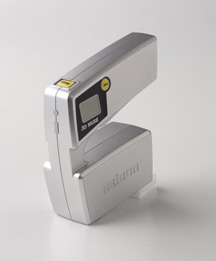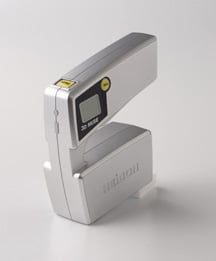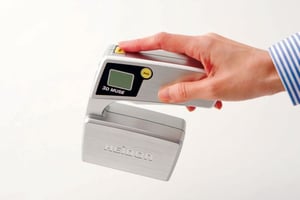
As the Sales Director of Kett, I field daily calls from people asking the question, "Why would I want to measure ___?" It's the same question I asked my superiors when I first started here 20 years ago, and, after much practice, I'm confident I can answer that question pretty thoroughly. Just to narrow it down though, today we'll be answering the question:
Why would I want to measure friction?
On a daily basis we all consume products that have run through some degree of quality analysis. You probably run various quality control checks in your manufacturing process. But, have you considered the cost of not inspecting the machinery that makes that process possible? The constant wear and tear, or friction, your machinery endures each day affects its manufacturing performance. This results in process and product quality inconsistencies, as well as safety issues for your operators.
However, before we get into the details, let's do a quick friction overview for those of you a little rusty in the physics department.
There are two types of friction: static friction and dynamic (kinetic) friction. Static friction is the amount of energy required to get a fixed mass to start to move. Dynamic friction, is the amount of energy required to keep a fixed mass moving at a fixed speed. Need more details before we continue our lesson? Visit this professor’s quick review on the difference between static and kinetic friction.
So, why is friction something we want to measure?
1. Friction Causes Wear
The less friction, the less wear, and the longer your machine will last. Longer lasting machinery is not only more economical, it’s also a greener way to run your operations. The ability to pre-determine what parts of your system will need maintenance before a total system failure is invaluable when it comes to keeping operations running smoothly. Ongoing, consistent friction measurement also optimizes the process of replacing parts. So, a friction analyzer can help you identify:
- When it’s time to replace a part due to the amount of wear.
- When the wear itself is increasing friction and accelerating more wear.
- How long it takes to reach the point of replacement.
2. Consistency In The Manufacturing Process
Consider the example of two identically constructed machines. With one, the manufacturing process seems to work as intended every time, while the other doesn’t, e.g. slipping boxes on a packing line or slipping web or sheet processes on rollers. Accurate friction testers ensure interface surfaces are consistent. In layman’s terms, surfaces that are not too sticky, and not too slippery... but just right!
3. Ensure Product Consistency
In addition to ensuring manufacturing consistency, there is also a need for product consistency. If the manufacturing process isn’t consistent or if variation of the raw materials isn’t corrected, your end product is going to have variation. When it comes to food products, medical devices, cosmetics, pharmaceuticals or any heavily standardized industry, this can make the difference between a final product being ready for the market, or being sent to the trash.
4. Safety
Preventing employees from slipping and falling with specially designed floors has been made possible with the use of accurate, simple to operate portable friction measurement instruments. Additionally, while packaging large bundles can be a relatively simple process, friction analyzers keep them in place during transit. Measuring friction of the outer packaging both during development and before shipment plays a dual role to keep workers safe while preventing product losses.
5. Research and Development
Finally, the traditional role of friction measurement in R&D has made great strides. The research part begins with measurement, which allows the causes of problems to be identified and repaired.
In a nutshell, inspecting your machinery and products with a friction analyzer on a regular basis ensures manufacturing consistency and safety. We can’t expect what we don’t inspect. Nothing could be more true than in the area of friction and friction measurement. Subscribe to our blog (top right) to learn how friction measurement takes place, in our next article.
Do you use friction analyzers in your manufacturing plant? Why, or why not?
Other blogs you may be interested in:
Top Ten Kett Moisture Meters and Test Equipment for 2014
How To Preserve Your Test Equipment Through the Polar Vortex



